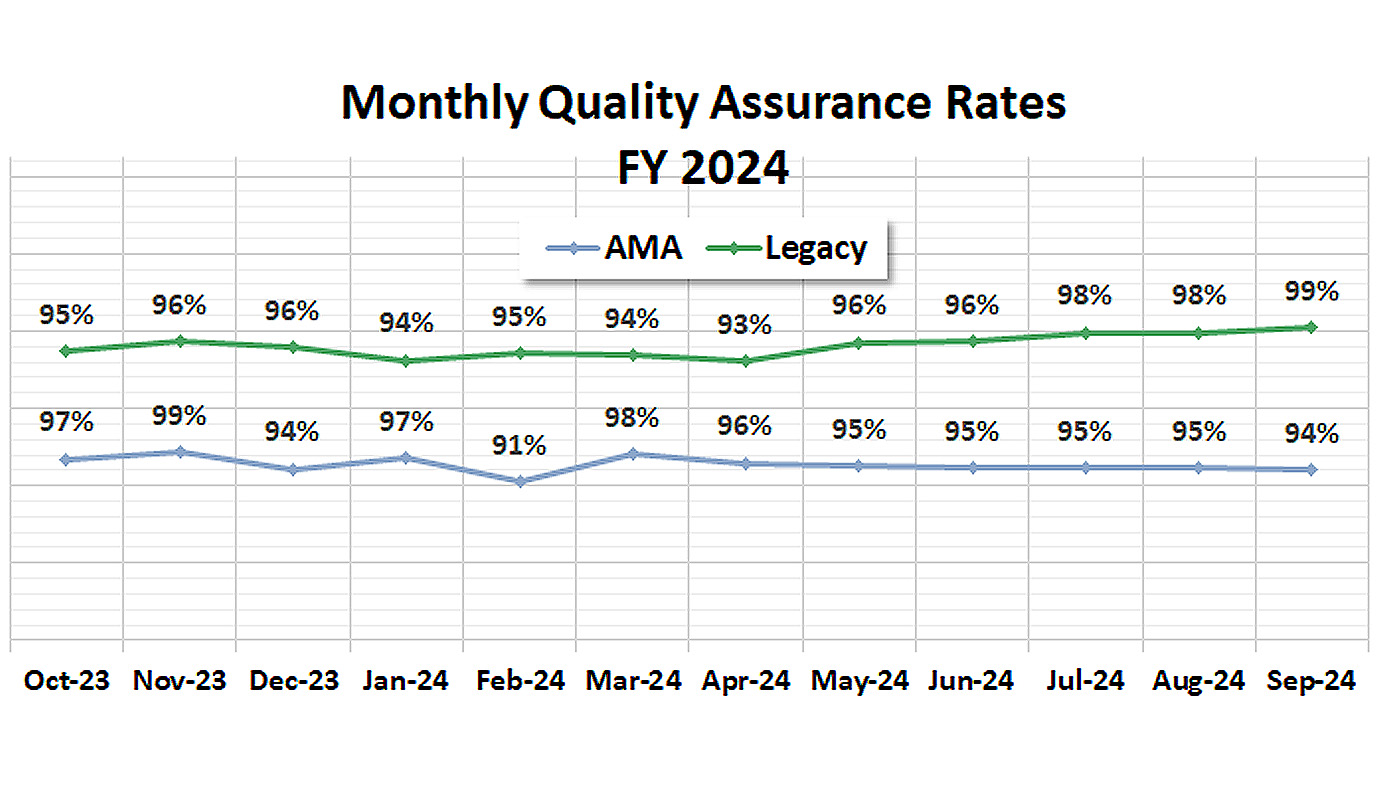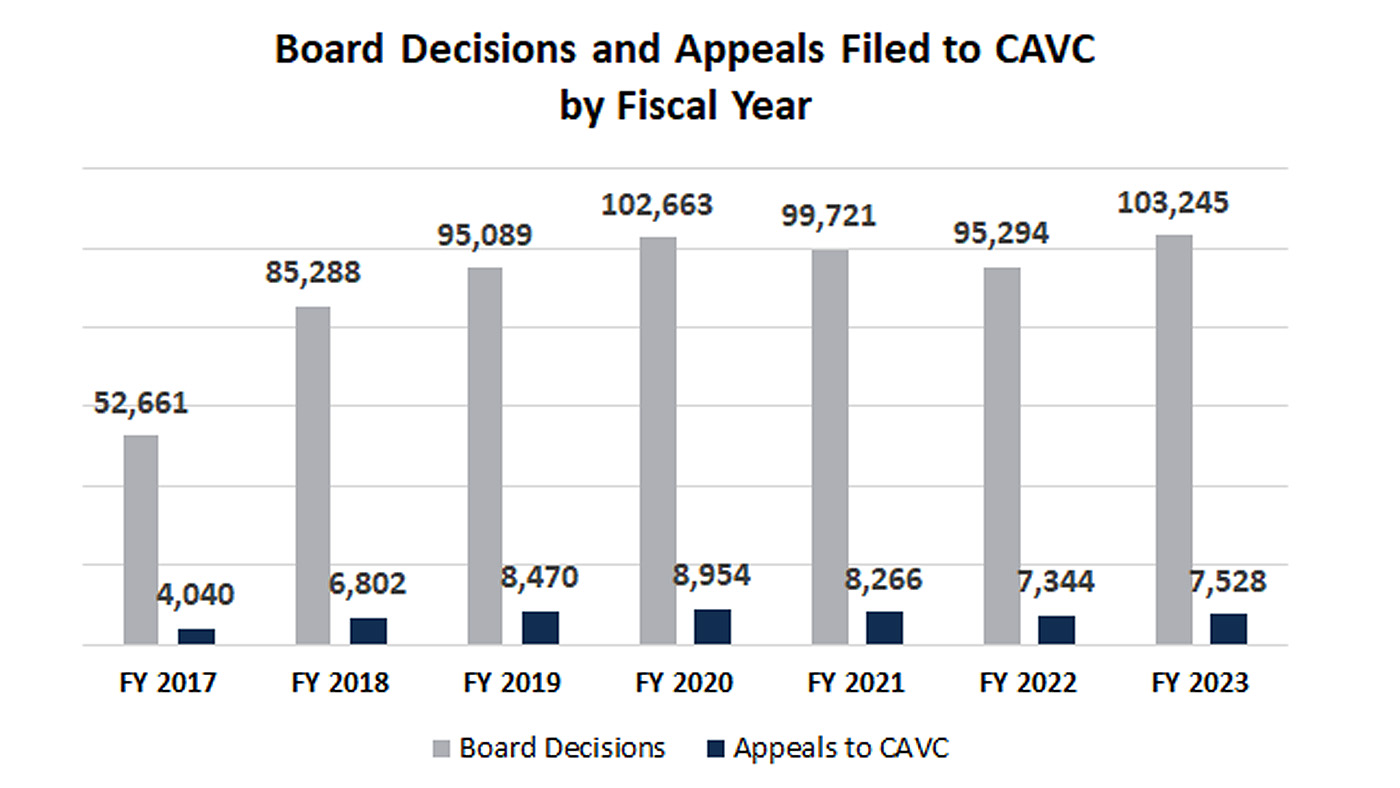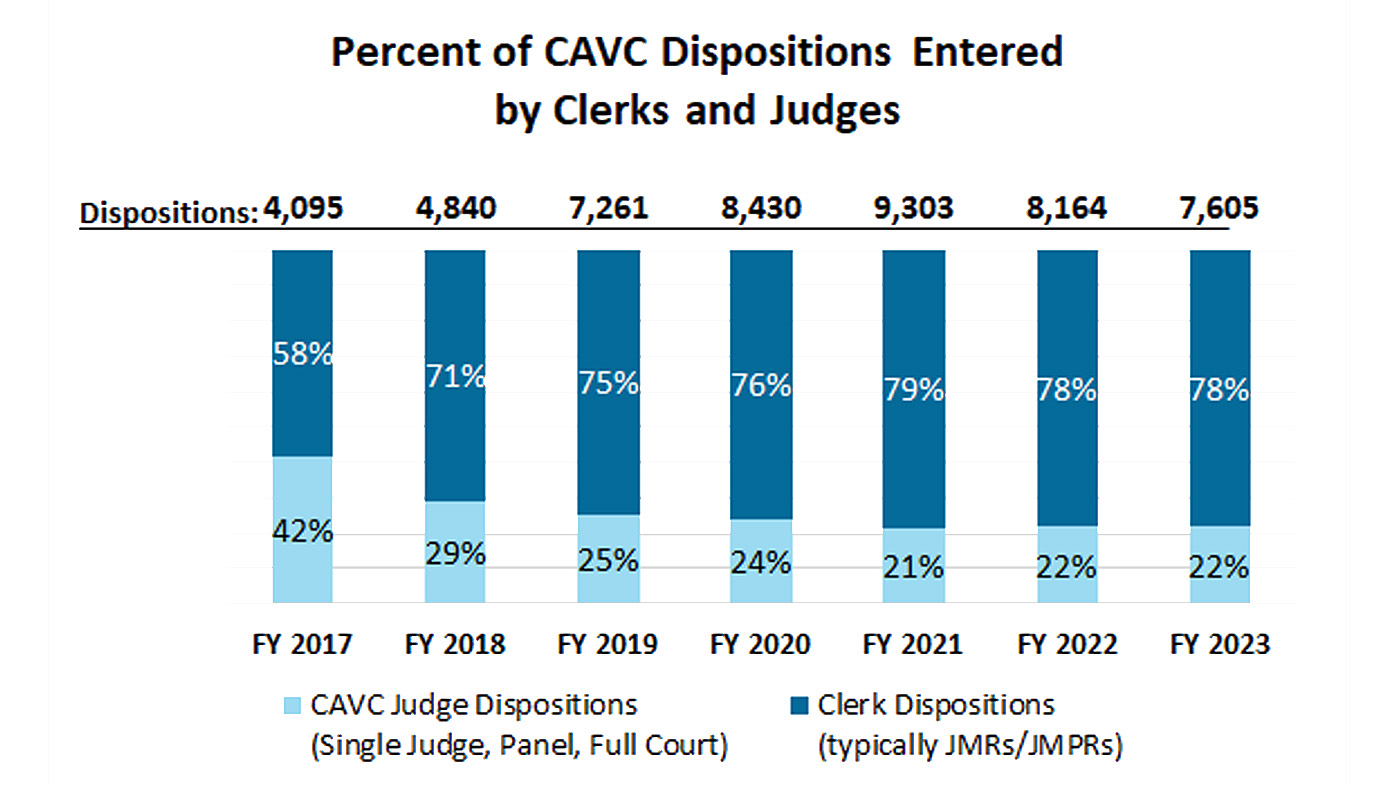Board of Veterans' Appeals
Better Decision Quality Leading to Fewer Court Appeals
The Board is committed to ensuring every appeal is decided as efficiently as possible, with a high degree of confidence that the Board’s judges are appropriately resolving appeals in accordance with the law. For example, the Board’s Office of the Chief Counsel has specially trained attorneys who meticulously review thousands of decisions each year before those decisions are released to the Veteran. To put it bluntly, they identify procedural issues or other potential flaws in these decisions even though most of the issues they identify don’t amount to clear legal error. Any potential issues or errors found during the review process are called to the attention of the Veteran Law Judge who signed the decision so the judge has the opportunity to revise their decision before it is dispatched.
Like an umpire who calls “strikes” with very big “strike zone,” the overwhelming majority of “strikes” called by the Board’s quality assurance review team typically involve circumstances when there is no clear legal error at all. Virtually all errors the Board discovers during its own quality assurance reviews are process or procedural errors. The Board’s independent review process hardly ever finds “clear and unmistakable error” that would cause a case to be “reversed” and overturned on appeal. Under both the Legacy and AMA appeals systems, the Board’s self-imposed goal is to have at least 92% of all reviewed appeals where no flaws can be found. The chart below illustrates the percent of decisions reviewed each month where no flaws can be found with the judge’s written decision.

TITLE GOES HERE
Some stakeholders have questioned the number of Board decisions appealed to the Court and how that may relate to the quality of Board decisions, especially when the Court decides to remand so many. However, as shown below, both the raw number and the percentage of Board decisions appealed to Court each year has been steadily declining. The Board issues over 100,000 decisions each year and grants at least some relief in more than a third of those decisions. The appeal rate of Board decisions to the Court was 8.9% in FY 2019 and has steadily dropped each year, down to a 7.3% appeal rate in FY 2023 according to the most recently published Court annual report. Stated another way, roughly 93% of the Board’s annual decisions are NOT appealed to the Court. The chart below demonstrates the relatively low percentage of the Board’s annual decisions that get appealed to the Court each year:

TITLE GOES HERE
It is important to note that the Court consistently dismisses approximately 11-12% of filed appeals each year during the past seven years. Most of those are voluntary dismissals where the Veteran wants to withdraw their appeal. While Court judges decide only a little over 20% of all appeals filed with the Court each year, they dismiss approximately 14% of those they do review and, on average, the Court’s judges affirm another 30% of the Board decisions they actually review. The Court’s judges also reverse very few Board decisions for “clear error” each year, typically fewer than 20 cases out of all the appeals filed each year. That said, during FY 2023, the Court’s judges remanded, in whole or in part, over 50% of the 1,441 Board decisions they reviewed on the merits (those not completely dismissed).
Another significant trend highlighted in annual reports published by the Administrative Conference of the United States is that the Court remanded 33% fewer cases for Board “remandable or reversable error” in FY 2023: from over 6,600-7,000 cases in FYs 2020-2022, down to 4,488 cases in FY2023. There is still work to be done to reduce that even more, but this trend is particularly remarkable because FY 2023 was a record-setting year with Board judges issuing 103,245 decisions for Veterans.

TITLE GOES HERE
For cases that are reversed or remanded by the Court Clerk or by Court judges each year, attorneys representing Veterans (even on a pro bono basis) are entitled to be paid fees for “substantially” prevailing by having a case returned to VA for readjudication because there is the possibility that the Veteran might obtain additional relief. In other words, attorney fees are still awarded even if the Veteran does not receive additional compensation, which is what happens in most cases. For each of the past four years, about 6,500-7,300 attorney requests for attorney fees have been granted at the Court and VA must pay all those fees. In the interest of transparency, the amounts awarded are published each year by the Administrative Conference of the United States, and this public data is searchable by agency, individual attorneys or firms receiving fees, and award amounts.
Below are some links that help explain why the appeal wait times grew and what the Board has been doing to improve.
- Workload Challenges of Two Separate Appeals Systems
- Requirements to Work Cases in Docket Priority Order
- More Board Personnel Address Pending AMA Appeals and Wait Times
- AMA Appeals System Shows Improvements Over Older Legacy System
- Veteran Choices for Type of Board Appeal Influences Wait Times
- Better Decision Quality Leading to Fewer Court Appeals
















